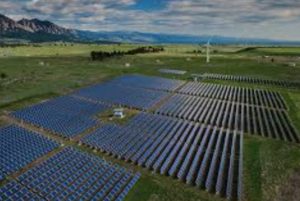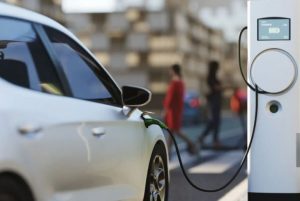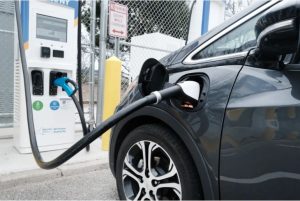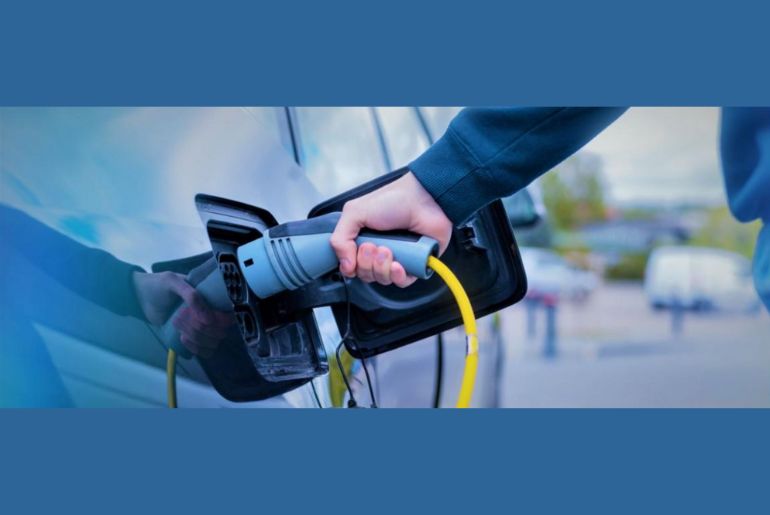EV Charging Infrastructure
Infrastructure for electric vehicle charging is necessary for the broad use of EVs and helps create a sustainable transportation system.
Reducing potential EV users’ driving range anxiety needs the construction of a comprehensive and effective EV charging infrastructure. To promote the switch to electric vehicles and create a cleaner, greener future, governments, corporations, and energy suppliers are making significant investments in the innovation of this infrastructure.
Below, we analyze the most prominent initiatives for revolutionizing EV charging in India.
1. Integrate Renewable Energy
 EV charging can become more affordable and environmentally friendly by incorporating renewable energy sources into the infrastructure. Moreover, decreasing the likelihood of power outages and lowering the cost of EV charging for EV owners, it can reduce dependence on fossil fuels and the pollution and global warming consequences that follow.
EV charging can become more affordable and environmentally friendly by incorporating renewable energy sources into the infrastructure. Moreover, decreasing the likelihood of power outages and lowering the cost of EV charging for EV owners, it can reduce dependence on fossil fuels and the pollution and global warming consequences that follow.
India has vast potential for renewable energy due to its abundant sunshine, flowing rivers, and advantageous wind patterns. The government is making good use of these renewable energy sources.
The government intends to raise the capacity of renewable energy generation to 500 GW by 2030, which would account for 50% of all energy needs. This enhancement, if it materializes, would lower emissions and supply continuous electricity for EV charging.
2. Incentivize Private Sector Investment
 The Indian government acknowledges the important role that the private sector plays in creating infrastructure for EV charging. The government has implemented a number of programs and regulations to motivate investment from the private sector.
The Indian government acknowledges the important role that the private sector plays in creating infrastructure for EV charging. The government has implemented a number of programs and regulations to motivate investment from the private sector.
The FAME scheme is one of these programs, wherein the Indian government has provided oil firms with Rs 800 crore to install EV charging stations. To further encourage private investment, the government has allowed 100% Foreign Direct Investment (FDI) in the EV charging infrastructure industry. These fixes could noticeably affect India’s future electric vehicle market.
3. Develop Fast-Charging Technology
 EV charging times can be reduced by creating fast-charging technology and related software. Fast chargers take less than an hour, whereas slow chargers take one to five hours. This can help reduce range anxiety, especially when traveling long distances.
EV charging times can be reduced by creating fast-charging technology and related software. Fast chargers take less than an hour, whereas slow chargers take one to five hours. This can help reduce range anxiety, especially when traveling long distances.
Moreover, fast-charging technologies can reduce the overall number of charging stations needed. A small number of fast-charging stations can offer the same level of service as many traditional charging stations because they can charge an EV in a matter of minutes.
The establishment of fast-charging infrastructure around the nation is being subsidized by the Indian government. Fast-charging stations are being launched nationwide by numerous private companies, who are also investing in the development of fast-charging technologies.
4. Increase Public Charging Infrastructure
 In India, the Ministry of Power is working with organizations such as the BEE to construct EV charging stations in public spaces, cities, and along roads.
In India, the Ministry of Power is working with organizations such as the BEE to construct EV charging stations in public spaces, cities, and along roads.
The Ministry of Heavy Industries has approved the building of 2,877 EV charging stations in several states, along with 1,576 stations on 16 highways and 9 expressways, under the FAME India program. Range concern will be greatly decreased by placing enough charging stations along these important highways, which span 10,275 kilometers throughout India.
Additionally, 810 EV charging stations have been built by private companies due to the Ministry of Power’s Energy Efficiency Services Limited (EESL) project. Companies, retail centers, parking lot owners, and RWAs are also receiving incentives from the government to install EV charging stations on their property.
The government is streamlining the installation procedures and increasing awareness of the benefits of charging stations for companies. For India to meet its goals for EV charging infrastructure, these incentives must be maintained.
EV charging infrastructure: Challenges
A strong and widely scattered charging infrastructure is essential to achieve India’s high EV ambitions.
Here’s a closer look at some major hurdles for a fully charged future:
1. Inadequate Power Grid
The electrical grid is already under a lot of pressure due to India’s rising power demand, which is predicted to rise by 9–12% in just the first half of 2023. This can be made worse by adding EVs to the system, leading to more frequent power outages. This is especially valid for rural regions.
By making potential EV owners less confident about their ability to charge their cars consistently, this power outage may block EV adoption. A decline in consumer confidence can also intimidate private sector investment in electric vehicle (EV) infrastructure.
2. Lack of awareness
There is still little public knowledge about EV charging options and their benefits. By filling in knowledge gaps with accessible information and awareness efforts, broader adoption can be promoted, increasing the need for charging infrastructure.
3. Lack of consistency in standards
Confusion is increased by the absence of uniform charging guidelines among manufacturers and geographical areas. Depleted batteries and incompatible plugs and communication protocols might leave drivers helpless. To guarantee flawless charging experiences, clear, consistent standards are necessary.
4. Patchy distribution, range anxiety
The majority of charging stations are located in metropolitan areas, leaving roads and rural areas without access to charging stations. Potential EV customers experience ‘range anxiety’ as a result, which restricts their options for travel.
5. High costs, low returns
It costs a lot of money to set up charging stations, especially fast-charging ones. Costs are increased by grid upgrades, equipment installation, and land acquisition. This might make it difficult for private players to grow.
Conclusion
India is on the edge of a revolution in electric vehicles due to a growing awareness of resource constraints and the demand for environmentally friendly transportation. Adoption is expanded by government programs like FAME India and a dedication to sustainability, although obstacles like uneven standards and low awareness still exist. Developing EV charging infrastructure in India can also create new job opportunities, boost economic growth, and enhance public health and overall quality of life.
For electric mobility to be flawlessly encompassed into the web of the country, stakeholders must work together to overcome these challenges and launch extensive public awareness campaigns.


